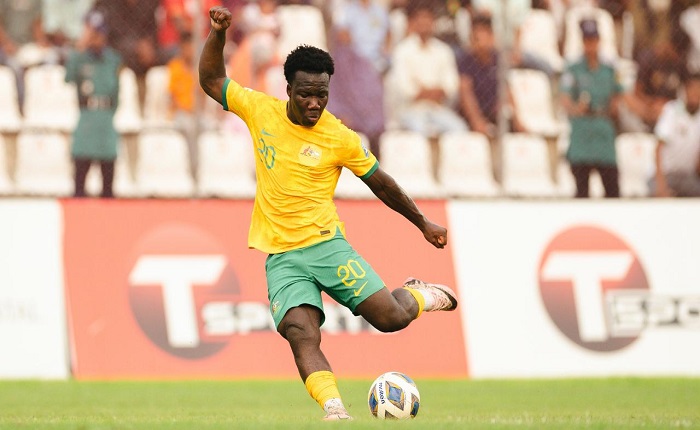Choosing the Perfect Sports Shoes

Whether you’re a seasoned athlete or just starting your fitness journey, choosing the right sports shoes is crucial. The right pair can enhance your performance, prevent injuries, and provide the comfort you need during physical activities. In this guide, we’ll explore everything you need to know about sports shoes, from their history and types to tips for selecting the perfect pair. No matter your sport or fitness level, understanding the importance of the right sports shoes can make all the difference.
The Evolution of Sports Shoes
The development of sports shoes has been a fascinating journey. From the rudimentary leather shoes worn by ancient athletes to the high-tech, performance-enhancing designs of today, sports shoes have come a long way. The introduction of rubber soles in the 19th century marked a significant milestone, allowing for better grip and flexibility. In the 20th century, the focus shifted towards specialized shoes tailored to specific sports, leading to the diverse range of sports shoes we see today.
Types of Sports Shoes
Different activities require different types of sports shoes. For instance, running shoes are designed to provide maximum cushioning and support, while basketball shoes offer ankle protection and grip for quick movements. Tennis shoes, on the other hand, need to be durable and supportive for lateral movements. Understanding the different types of sports shoes is essential for choosing the right pair that suits your needs and the demands of your chosen sport.
1. Running Shoes
Running shoes are one of the most popular types of sports shoes. They are designed to absorb shock, provide stability, and offer flexibility. Whether you’re a marathon runner or a casual jogger, investing in a good pair of running shoes can prevent injuries and improve your performance. Look for running shoes that offer adequate arch support, cushioning, and a snug fit.
2. Cross-Training Shoes
If you’re into a variety of workouts, cross-training shoes are a versatile option. These sports shoes are designed for activities like weightlifting, aerobics, and high-intensity interval training (HIIT). Cross-training shoes offer a balance of flexibility, support, and durability, making them ideal for multi-disciplinary fitness enthusiasts.
3. Basketball Shoes
Basketball requires quick direction changes, jumps, and sprints, so sports shoes for basketball need to offer excellent ankle support, cushioning, and traction. High-top basketball shoes are popular for their ankle protection, while low-tops provide more flexibility for faster movements. Choosing the right basketball shoes can enhance your game and reduce the risk of injury.
4. Soccer Cleats
Soccer cleats are specialized sports shoes designed for outdoor play. They feature studs or cleats on the sole to provide grip on grass or turf. Soccer cleats come in various designs, including firm ground, soft ground, and artificial ground options. Each type is tailored to specific playing conditions, so it’s essential to choose the right pair based on where you play.
5. Tennis Shoes
Tennis involves a lot of lateral movements, so sports shoes for tennis need to offer support, stability, and durability. Tennis shoes are designed with reinforced areas to withstand the wear and tear of constant stops, starts, and side-to-side motions. They also provide the necessary grip for playing on different court surfaces, such as clay, grass, or hard courts.
6. Hiking Shoes
For those who enjoy outdoor adventures, hiking shoes are the perfect sports shoes. They are built to handle rugged terrain, offering support, traction, and protection. Hiking shoes come in various styles, from lightweight trail shoes to heavy-duty boots, catering to different types of hikes. Choosing the right hiking shoes can make your outdoor experience safer and more enjoyable.
7. Cycling Shoes
Cycling shoes are specialized sports shoes designed to optimize pedaling efficiency. They typically feature stiff soles that improve power transfer from your legs to the pedals. Some cycling shoes are designed for road cycling, while others are suited for mountain biking. The right cycling shoes can enhance your performance and provide a more comfortable riding experience.
8. Golf Shoes
Golf shoes are unique sports shoes that provide grip and stability on the golf course. They usually feature spikes or cleats on the sole to prevent slipping on the grass. Golf shoes also offer support for the unique movements involved in a golf swing, helping you maintain balance and accuracy. Choosing the right golf shoes can improve your game and provide comfort during long rounds.
How to Choose the Right Sports Shoes
Selecting the right sports shoes involves considering several factors, including your activity, foot type, and personal preferences. Here are some tips to help you find the perfect pair:
1. Understand Your Foot Type
Knowing your foot type is essential when choosing sports shoes. Feet generally fall into three categories: neutral, flat, or high-arched. Each type requires different levels of support and cushioning. Many sports stores offer gait analysis services to help you determine your foot type and find the right shoes accordingly.
2. Consider the Activity
Different activities place different demands on your feet, so it’s important to choose sports shoes that match your chosen sport. For example, running shoes are not ideal for playing basketball, and vice versa. Make sure the shoes you choose are designed specifically for the activity you’ll be engaging in.
3. Focus on Fit and Comfort
The fit of your sports shoes is crucial for comfort and performance. Shoes that are too tight can cause blisters and discomfort, while those that are too loose can lead to instability and injury. When trying on sports shoes, wear the same type of socks you’ll use during your activity, and make sure there’s enough room for your toes to move comfortably.
4. Don’t Forget About Support
Support is another critical factor when selecting sports shoes. The right level of arch support and stability can prevent injuries, especially during high-impact activities. If you have specific foot issues, such as overpronation or plantar fasciitis, consider getting custom orthotics or choosing shoes with built-in support features.
5. Pay Attention to Materials and Durability
The materials used in sports shoes affect their durability and breathability. Look for shoes made from high-quality materials that provide ventilation and can withstand the demands of your activity. Durable shoes may cost more upfront, but they can save you money in the long run by lasting longer and providing better performance.
The Importance of Replacing Your Sports Shoes
Even the best sports shoes have a lifespan. Over time, the cushioning and support break down, reducing their effectiveness and increasing the risk of injury. It’s important to replace your sports shoes regularly, depending on how often you use them. As a general rule, running shoes should be replaced every 300-500 miles, while other sports shoes may need replacement once they show signs of wear and tear.
Conclusion
Choosing the right sports shoes is essential for maximizing your performance and minimizing the risk of injury. By understanding the different types of sports shoes and considering factors such as fit, support, and activity, you can find the perfect pair for your needs. Remember, investing in quality sports shoes is an investment in your health and well-being, ensuring you can enjoy your favorite activities comfortably and safely.
FAQs
1. How often should I replace my sports shoes?
It depends on the type of activity and how often you use them. For running shoes, it’s recommended to replace them every 300-500 miles. Other sports shoes should be replaced once they start showing signs of wear or if they no longer provide adequate support.
2. What are the best sports shoes for running?
The best sports shoes for running offer a combination of cushioning, support, and flexibility. Brands like Nike, Adidas, and ASICS are known for their high-quality running shoes. It’s important to choose running shoes that match your foot type and running style.
3. Can I use the same sports shoes for different activities?
While some sports shoes, like cross-training shoes, are versatile enough for multiple activities, it’s generally better to choose shoes specifically designed for each sport. This ensures you get the right support and performance features for the activity you’re engaging in.
4. How do I know if my sports shoes provide enough support?
Your sports shoes should feel stable and comfortable during your activity. If you experience foot pain, instability, or discomfort, it may be a sign that your shoes lack proper support. A gait analysis can help determine if your shoes offer the right level of support for your feet.
5. What should I look for in sports shoes for flat feet?
For individuals with flat feet, sports shoes with strong arch support and stability features are essential. Look for shoes labeled as motion control or stability shoes, as they are designed to provide the necessary support for flat feet.





